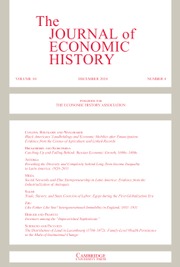This book examines the effects of the American Civil War on the Lancashire cotton trade and it seeks to secure two principal objectives. First, to establish how this conflict affected the raw cotton supply and, second, to assess the consequences of the war on the raw cotton trade based in Liverpool, with particular reference to the cotton brokers. The focus on Liverpool is apt: this port city was at the nexus of the final link in the producing chain and the first link in the manufacturing chain.
Losing the Thread consist of eight chapters. The first three chapters are contextual and consider, in turn, the British cotton industry on the eve of the U.S. civil war, United Kingdom efforts to reduce dependence on U.S. cotton before the war, and how the raw cotton market in Liverpool, adapted during the war. Subsequent chapters address the validity of claims that the Lancashire cotton famine was a consequence of pre-war overproduction, assess the extent to which Liverpool’s citizens and merchants sympathized with the Confederates, and evaluate the impact of the war on the Liverpool-based raw cotton brokers. The concluding chapter reviews the extent to which Liverpool and the cotton-producing Southern states adapted to the post-war environment.
Jim Powell is a convincing myth-debunker. As a result of detailed examination of archival sources, U.K. and U.S. newspapers and trade circulars, and voluminous secondary sources, we can be confident that Powell’s challenge to existing interpretations is sound. For example, in Chapter Four, the over-production argument is examined from three perspectives: Britain’s cotton production and export trade, statistics on cotton stocks, and the anecdotal evidence of Liverpool brokers. None of these sources support the over-production hypothesis; in fact, it appears that the major problem was insufficient supply. It is quite possible that claims of overproduction served a broader purpose, for example, by highlighting the failure of mill owners to ameliorate the effects of short-time working and unemployment on their employees.
Similarly, in Chapter Six, Powell’s advocacy of the need to view the raw cotton market from a global perspective, rather than through a myopic U.K.-centric lens, becomes apparent. This trade was worth about £3 billion at today’s prices. The war damaged the networks of merchants who were extensively engaged in American raw cotton. But, because cotton could be sourced from Brazil, Egypt, and India, the war simultaneously provided an incentive to develop networks that were not engaged in the American raw cotton trade. Further, while the war accelerated the development of cotton futures trading in Liverpool, the nature of this trade changed. In the pre-war era, speculation involved stocks of raw cotton held in Liverpool but, from 1861, speculation encompassed: raw cotton that might never be unladen at Liverpool, raw cotton that was in transit somewhere on the globe, or raw cotton that was not known for certainty to exist. These developments pitted Liverpool against Manchester: while brokers in the former city tried to inflate prices, brokers in the latter city tried to deflate prices. Although there was a substantial reduction in the volume of the raw cotton trade centred on Liverpool, the enormous rise in the price of raw cotton during the war meant that the value of the trade reached its nineteenth century pinnacle.
One of the strengths of Losing the Thread, is that Powell interweaves the evolving fortunes of Liverpool and America. For example, the war generated a significant change in the composition of members belonging to the Liverpool Cotton Brokers Association (LCBA). Simultaneously, the war facilitated the growth of raw cotton production in other American states, especially Texas. Another strength is that Powell is scrupulous when discussing the limitations of the sources used: some are fragmentary, while some cover the period before and after the war, but not during the actual conflict. A pertinent example of the need to be vigilant occurs in the discussion of the changing membership of the LCBA. The limited evidence suggests that there was much confusion about who, exactly, was a member of this institution; it appears that the LCBA was unable to distinguish between firms in which all partners were members, and firms were only some of the partners were members. This opaqueness raises the possibility that many selling brokers were importers, or vice versa. A further strength of this book—and one which this reviewer found particularly intriguing—was the “human angle.” For example, the book is dedicated to William Mayne Neill and Henry Montgomery Neill, Powell’s great-great grandfather and great-great uncle, respectively, who became acknowledged experts on raw cotton merchanting and were the proprietors of the firm Neill Brothers & Co. Similarly, in the concluding chapter, Powell traces the contrasting post-war fortunes of some of the key players among the Liverpool merchant community. For example, Thomas Ellison, who was a cotton broker and historian, died with an estate valued at £16, 278, while Maurice Williams, also a cotton broker, lost a fortune, ended his working life as an estate agent, and left an estate worth less than £200.
Jim Powell has written a comprehensive and illuminating account of how the American civil war affected the Liverpool raw cotton market. In doing so, Powell has successfully disproved many of the myths that surround the U.K.-impact of this war. It seems appropriate to end this review by quoting Powell’s general assessment of the war: “The civil war years were, except for a handful of successful speculators and some brokers, a time of unmitigated catastrophe for Britain’s cotton trade, and ultimately for America’s cotton producers”(p.12).


